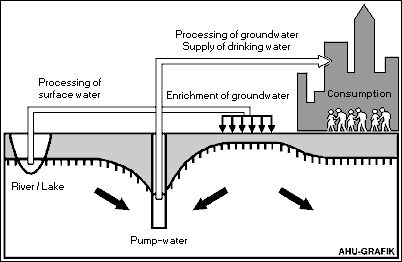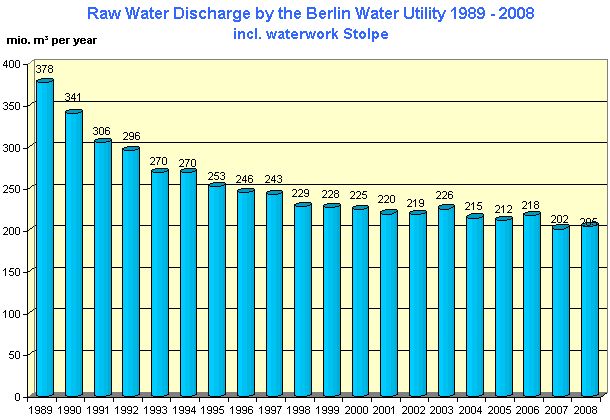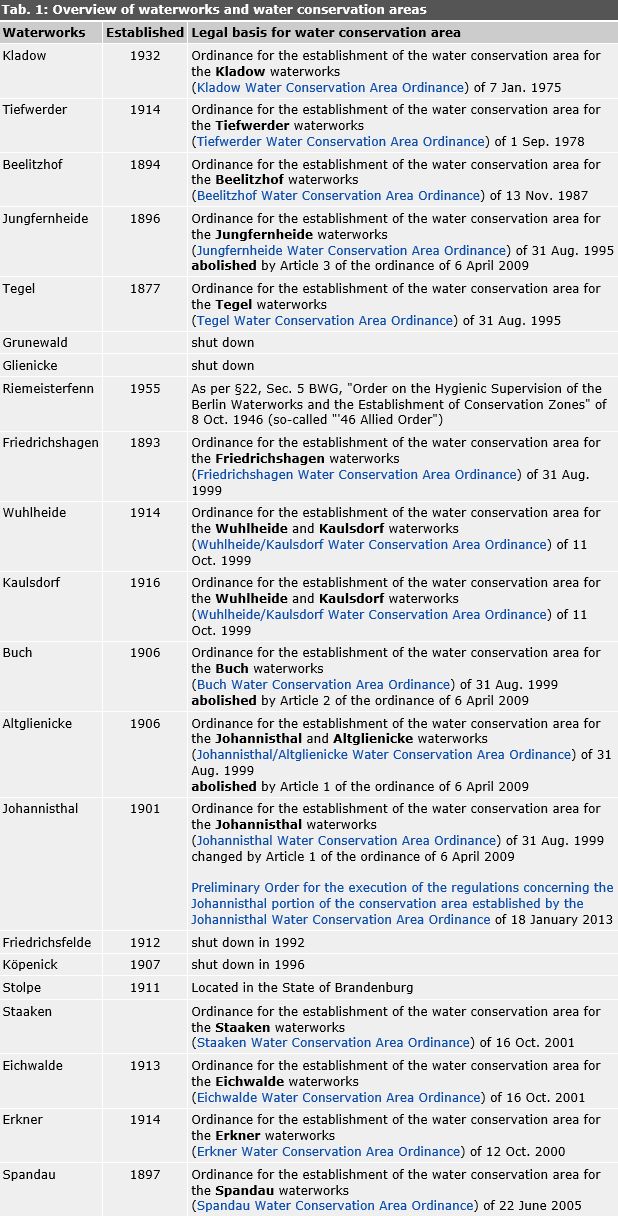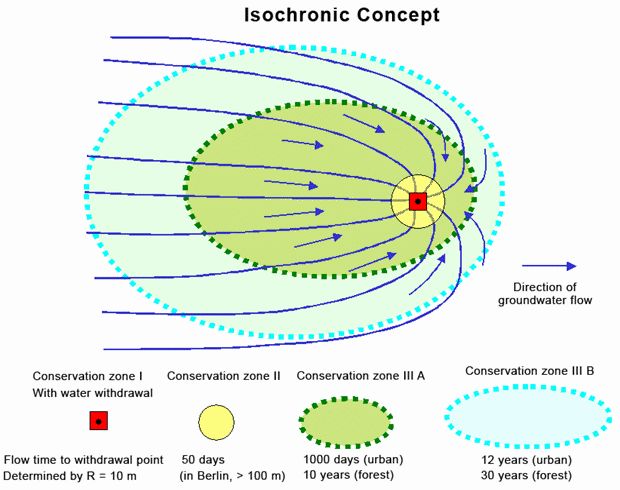For the water conservation district of the Johannisthal waterworks exists a "Preliminary Order for the execution of the regulations concerning the Johannisthal portion of the conservation area established by the Johannisthal Water Conservation Area Ordinance" of 18 January 2013 until the commencement of a new water conservation area ordinance. The preliminary order was published in the Official Journal of Berlin of 22 February 2013. Different regulations may apply to locations in the area of the Johannisthal Conservation Area after this date.
The Staaken, Eichwalde and Erkner waterworks are located in the State of Brandenburg, and are not operated by the BWB. Corresponding to the water catchment areas for groundwater withdrawal for drinking water purposes, the water conservation zones here cross the border. The Berlin ordinances for these waterworks serve for the protection of those parts of the cross-border water conservation zones located on Berlin territory.
The wording of the respective ordinance (in German) can be found under www.berlin.de/sen/umwelt/wasser/wasserrecht/
The Riemeisterfenn waterworks is the only one that still falls under the "Order on the Hygienic Supervision of the Berlin Waterworks and the Establishment of Conservation Zones" of 8 Oct. 1946.
A fixed, limited amount of drinking water for the supply of Berlin is also discharged at the Stolpe waterworks, located in the State of Brandenburg and operated by the BWB. This involves an authorised exception to the stipulation of § 37a BWG, according to which the water required for the public water supply of Berlin is to be obtained within the territory of Berlin.
Criteria for the Delimitation of Water Conservation Areas
According to the stipulations of §51 WHG and §22 BWG, drinking water conservation areas are to be subdivided into zones with different protective regulations. The goal of the structure by conservation zones is to take the principle of proportionality into account. Since the danger for the groundwater used decreases with the distance of the source of danger from the wells, the zones are subjected to increasingly weaker restrictions the further they are from the wells.
Under the older regulations, applicable in Beelitzhof, Kladow and Tiefwerder, no differentiation was made within the remotest conservation zone, Zone III. In the water conservation area ordinances issued since 1995, Conservation Zone III has been subdivided into III A and III B.
The basis for the measurement and certification of drinking water conservation zones is the Technical Regulations of the German Technical and Scientific Association for Gas and Water (DVGW). The basis for the measurement of the breakdown into conservation zones in modern water conservation area ordinances is the isochronic concept. Isochrons are lines showing equal flow times of the groundwater. These are ascertained with the aid of hydrogeologic investigations, and "projected" onto the terrain surface, taking the hydrogeological, hydrological and geological conditions into account. The conservation area boundaries of the conservation zones II, III A and III B are established, with additional consideration for local conditions within a technically acceptable framework (e.g. housing, infrastructure). To make as clear as possible a determination, the actual delimitation is carried out along existing lot boundaries, pathways, streets or other markings.
Flow times to the point of withdrawal for the modern certification of conservation zone boundaries in Berlin:
- Conservation Zone II: 50 days
- Conservation Zone III A: 500 days to 10 years
- Conservation Zone III B: 2500 days to 30 years
Due to the great expanse of the catchment areas of the waterworks considered – they extend far into Brandenburg – additional considerations were required in Berlin in order to resolve the conflict between a generally stricter groundwater conservation system on the one hand and an urban development with economic interests on the other. Here, it was possible to use the concept developed by Lühr & Schulz-Terfloth in 1992, so as to distinguish between inner-city catchment areas with a dense population, and rural catchment areas with a silvicultural character. The main criterion is that despite all safety precautions, an accident or disruptive incident involving water-endangering pollutants cannot be excluded, and that the conservation zones must therefore be extended at least far enough to provide sufficient time allow the implementation of effective defensive measures for the protection of discharge wells. Thereafter, different flow times were used as the basis for
delimiting conservation zones (Schulz-Terfloth 1998) in the urban-type areas than in those with a silvicultural character (see Table 2 and Fig. 3).





